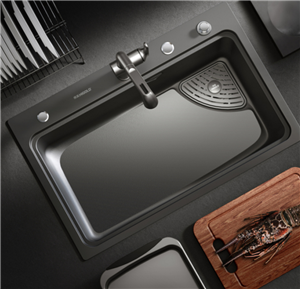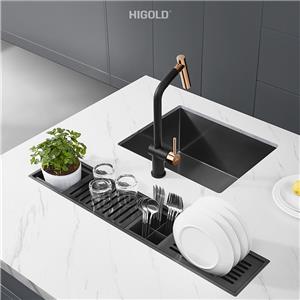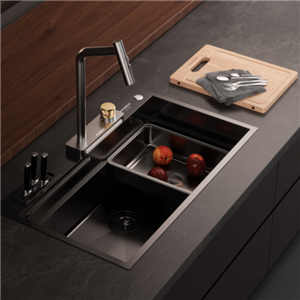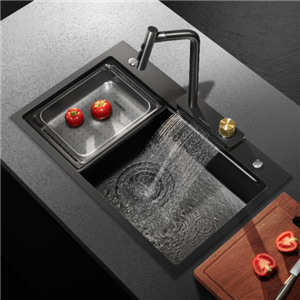Will the waterfall faucet accumulate scale?
The kitchen faucet is no longer just a simple tool, it has gradually become an important part of home aesthetics. Especially in modern home kitchens, waterfall faucets have become the first choice of many consumers with their unique appearance and smooth water flow effect. The design of the waterfall faucet is inspired by the waterfall in nature, simulating the effect of the natural fall of water, bringing an elegant and relaxing visual experience. Therefore, it has become a beautiful landscape in modern kitchens and even bathrooms.
However, like all kitchen appliances, the use of waterfall faucets will also face some common problems. Especially after long-term use, the scale problem has become a phenomenon that cannot be ignored. So, will the waterfall faucet accumulate scale? This is a question that many people often ask when choosing this type of faucet. This article will explore this topic in depth, analyze whether the waterfall faucet will accumulate scale, and provide effective cleaning and prevention measures.
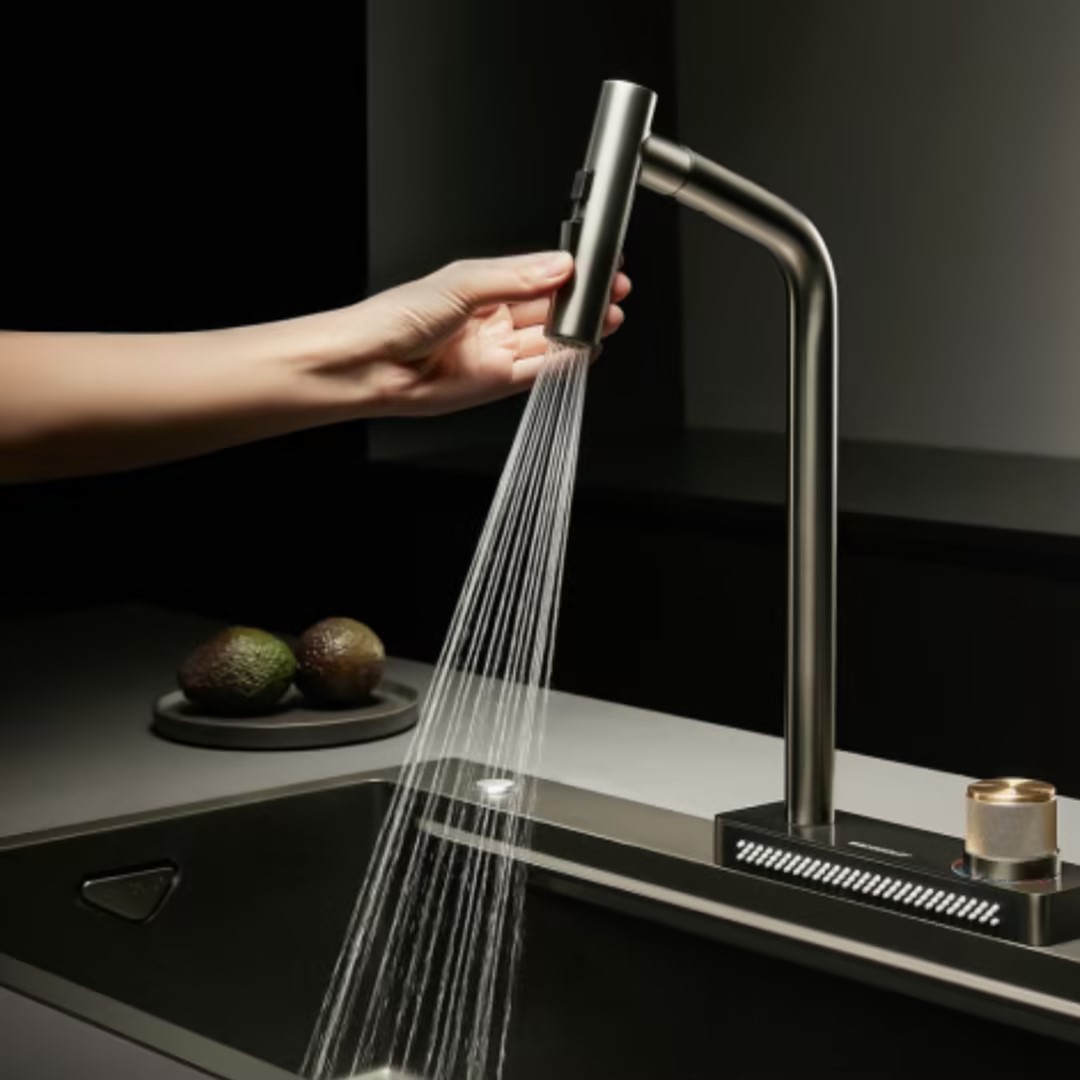
What is scale?
Before discussing whether the waterfall faucet will accumulate scale, we first need to understand the formation process and properties of scale. Scale, or scale deposition, is caused by the reaction of minerals (mainly calcium and magnesium) in water with other substances in the water. As the water evaporates or the temperature changes, these substances gradually deposit on the surface of faucets, pipes, shower heads, etc., forming a layer of white or grayish-white solid substances. This phenomenon usually occurs in hard water areas, where hard water contains more minerals such as calcium and magnesium.
The accumulation of scale not only affects the appearance of faucets and sinks, but may also block the outlet of the faucet, resulting in reduced water flow, and even damage the mechanical structure inside the faucet. For some faucets with special designs, such as waterfall faucets, the problem of scale accumulation may be more serious, because the outlet of the faucet is usually larger, the water flow is larger, and scale is more likely to accumulate.
Will waterfall faucets accumulate scale?
The unique design of waterfall faucets makes them highly aesthetic, but it also provides a potential "hotbed" for scale accumulation. Unlike traditional single-outlet faucets, waterfall faucets usually adopt a wide-mouth design, and the water flows naturally, simulating the water flow effect of a waterfall. Such a design not only provides visual enjoyment, but also effectively increases the water flow and distribution range of the water flow. However, this water flow design also means that more water contacts the surface of the faucet, especially in places with wide water outlets, where the risk of scale deposition will be higher.
1. Distribution of water flow
The water outlet of the waterfall faucet is wider and the water flow is more evenly distributed, but this also means that during the falling process of the water flow, the minerals in the water have more opportunities to contact the surface of the faucet and form scale. Especially when the water flow is not cleaned in time for a long time, the accumulation of scale will be more obvious.
2. The relationship between water flow and temperature
The water flow of the waterfall faucet is usually larger, and the impact force of the water flow when it falls is stronger. In some hard water areas, due to the large temperature change of the water (such as from hot water to cold water), this temperature difference may aggravate the deposition of scale. The minerals in the water will be more easily deposited on the surface of the faucet under the action of the temperature difference, forming a scale layer.
3. Faucet material
Most waterfall faucets are made of stainless steel, copper, aluminum alloy and other materials. These metal materials have strong corrosion resistance, but they are also easy to absorb minerals in the water. Over time, a thick layer of scale may accumulate on the surface of the faucet, especially in places where the water flow is in contact for a long time.
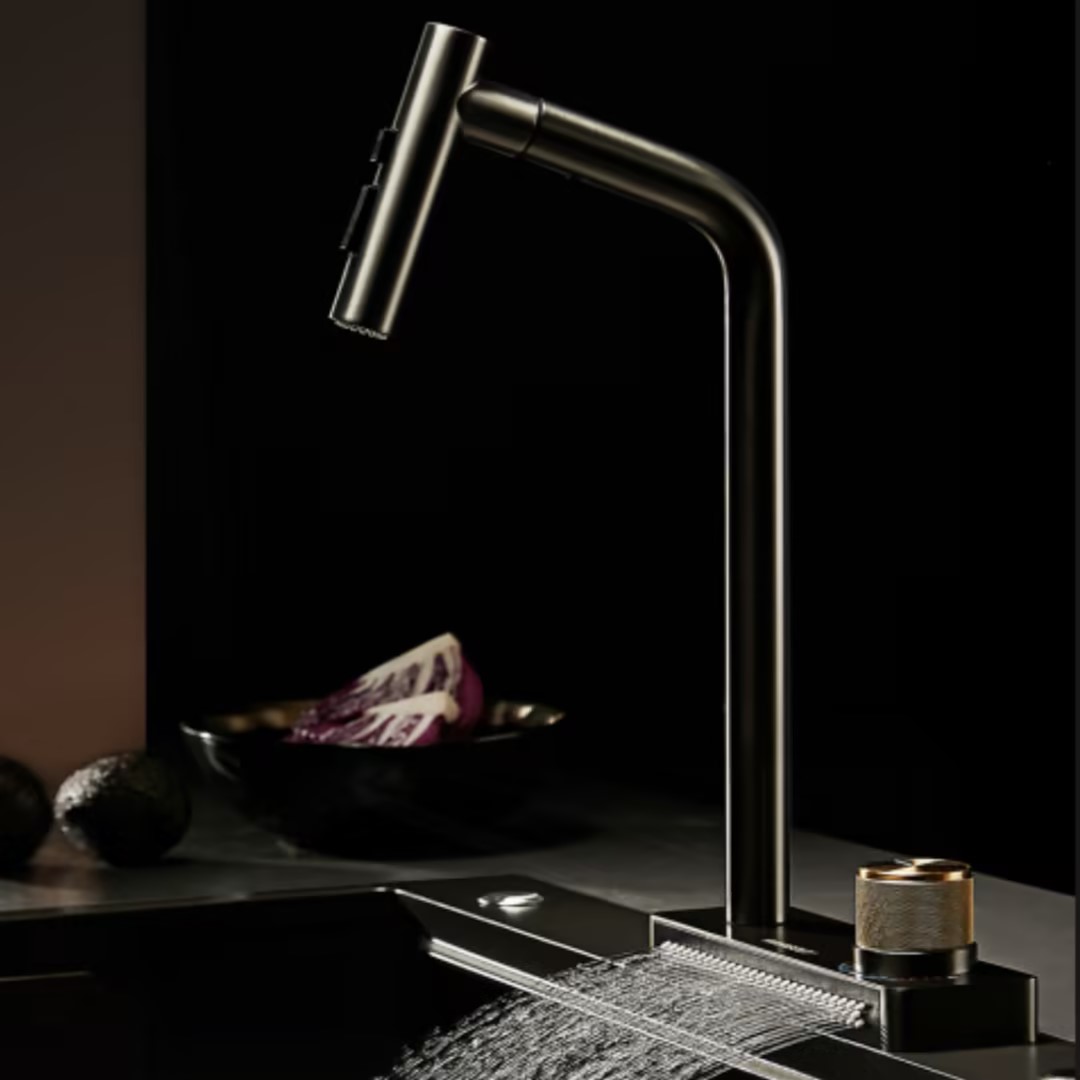
How to judge whether the waterfall faucet has accumulated scale?
Although the beauty and functionality of waterfall faucets are popular among consumers, if they are not cleaned and maintained regularly, the accumulation of scale will be inevitable. The following are common manifestations of scale accumulation on waterfall faucets:
1. Uneven water flow
When scale is deposited on the outlet of the faucet, it will hinder the normal passage of water flow, resulting in uneven or poor water flow. In this case, the waterfall effect of the waterfall faucet will be greatly reduced, and the water flow may become scattered, affecting the user experience in the kitchen or bathroom.
2. White deposits appear on the faucet surface
The most common manifestation of scale is the appearance of white or grayish white deposits on the surface of the faucet. These deposits are usually formed by the deposition of minerals such as calcium and magnesium in the water. In severe cases, a thick layer of scale will form, affecting the appearance of the faucet.
3. Damage to the function of the faucet
In some serious cases, the accumulation of scale may affect the internal structure of the faucet. Scale accumulates in the internal pipes of the faucet, which may cause pipe blockage, reduce water flow pressure, and even affect the switching operation of the faucet. The service life of the faucet that is not cleaned for a long time will also be shortened.
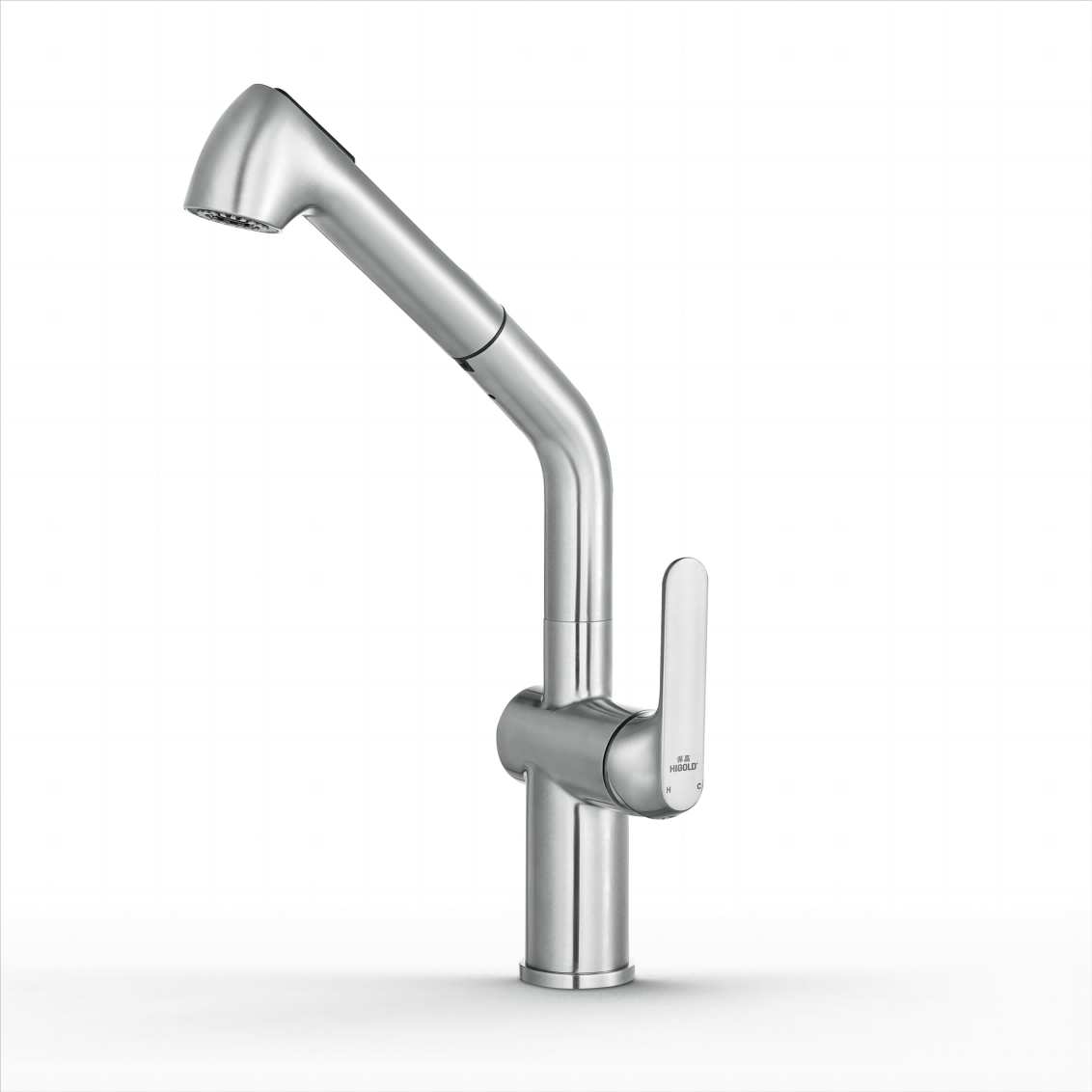
How to clean and prevent scale accumulation in waterfall faucets?
Although scale poses a certain threat to waterfall faucets, scale accumulation can be effectively prevented through proper cleaning and maintenance. Here are some common cleaning and preventive measures:
1. Clean the faucet regularly
Cleaning the faucet regularly is one of the most effective ways to prevent scale accumulation. You can use a special cleaner to clean the surface of the faucet to remove scale and stains. Use a soft cloth or sponge to wipe gently, and avoid using too rough materials to avoid scratching the surface of the faucet. For areas with more severe scale, you can use natural cleaners such as vinegar or lemon juice, which are acidic substances that can effectively dissolve scale.
2. Install a water softener
If the water quality in your area is hard, you can consider installing a water softener in the kitchen. A water softener can effectively reduce the content of minerals such as calcium and magnesium in the water, reducing the formation of scale from the source. After using a water softener, the mineral content in the water will be significantly reduced, and the chance of scale accumulation on the surface of the waterfall faucet will also be greatly reduced.
3. Avoid long-term water outages
If you don't use the faucet for a long time, you can consider draining the water flow from the faucet to avoid stagnation on the surface of the faucet. If the water is stopped for too long, the minerals in the water are more likely to deposit and form scale.
4. Use anti-scale spray
There are some special anti-scale spray products on the market. Using these products can form a protective film on the surface of the faucet to reduce the deposition of scale. These sprays are usually based on silicon or polymers, which can form a protective layer on the surface of the faucet to effectively prevent the adhesion of scale.
Higold: Customizable Kitchen Hardware for Global Buyers
Higold Group Co., Ltd. specializes in manufacturing customizable stainless steel Inox kitchen sinks and faucets. Our products are available in a range of styles, sizes, and finishes, tailored to your unique requirements. Whether you are looking to buy wholesale or customize your order, we can meet your needs with top-quality products and competitive pricing. With over 7 production lines and automated systems, we guarantee quick turnaround times and cost-effective solutions for all types of customers worldwide.

